Non-sweet fruits are often thought to be healthier than their sweet counterparts. This is due to the misconception that sweet, simple sugars are harmful in general. From a biological perspective, this assumption is not plausible – quite to the contrary!
For the quick reader:
Are Non-Sweet Fruits Healthier than Sweet Fruits?
Non-sweet fruits are not healthier than sweet fruits. Sweet fruits – especially tropical fruits – are essential for human health as our ancestors were highly frugivorous and have evolved with those types of fruits as their main food source. In contrast, most non-sweet “vegetable fruits” naturally contain potent toxins. Their wild types are not edible! The two most prominent toxic compounds in vegetable fruits are cucurbitacin and solanine. Humans can only safely eat the fruits – of those otherwise toxic plants – due to selective breeding. Though the decreased toxic loads are enough for the fruits to become palatable for humans, they are not entirely eliminated! This shows that non-sweet fruits have not evolved as human (or mammalian) food sources.
In contrast to non-sweet fruits, most sweet fruits – especially tropical fruits – are edible for primates (including humans) in the wild – because they are our biologically appropriate foods: humans have co-evolved with those fruits as the primary food source (read more here).
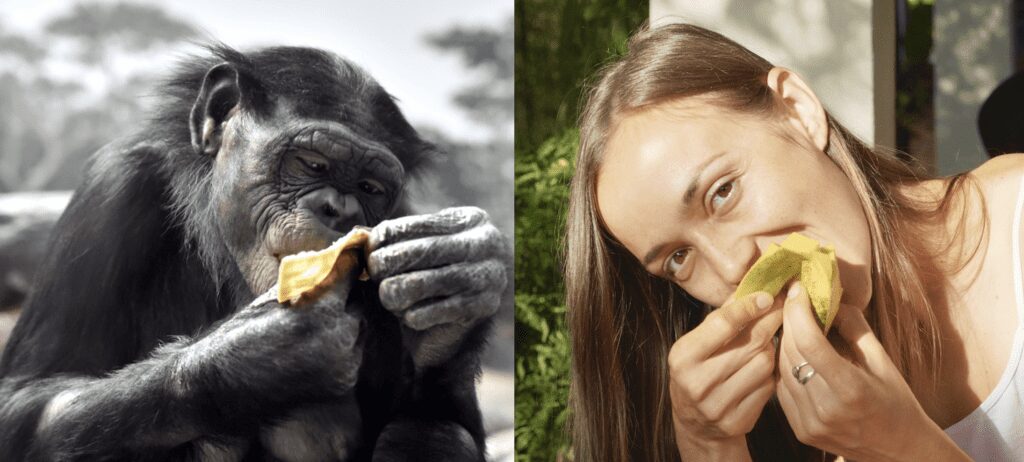
Not surprisingly, it turns out that sugar from sweet fruits is actually healthy. So… isn’t it ironic that it’s a recent dietary trend to avoid sweet fruits!?
But let’s elaborate what non-sweet fruits actually are, and how healthy they are:
Non-sweet vegetable fruits
Sweetness is the ultimate character we associate with fruits. But not all fruits are sweet! Non-sweet fruits are often categorized as vegetables because we use them for cooking and in salads. In actuality, many of our daily vegetables are botanically fruits and belong to the two plant families Solanaceae and Cucurbitacea:
Solanaceae (Nightshades)
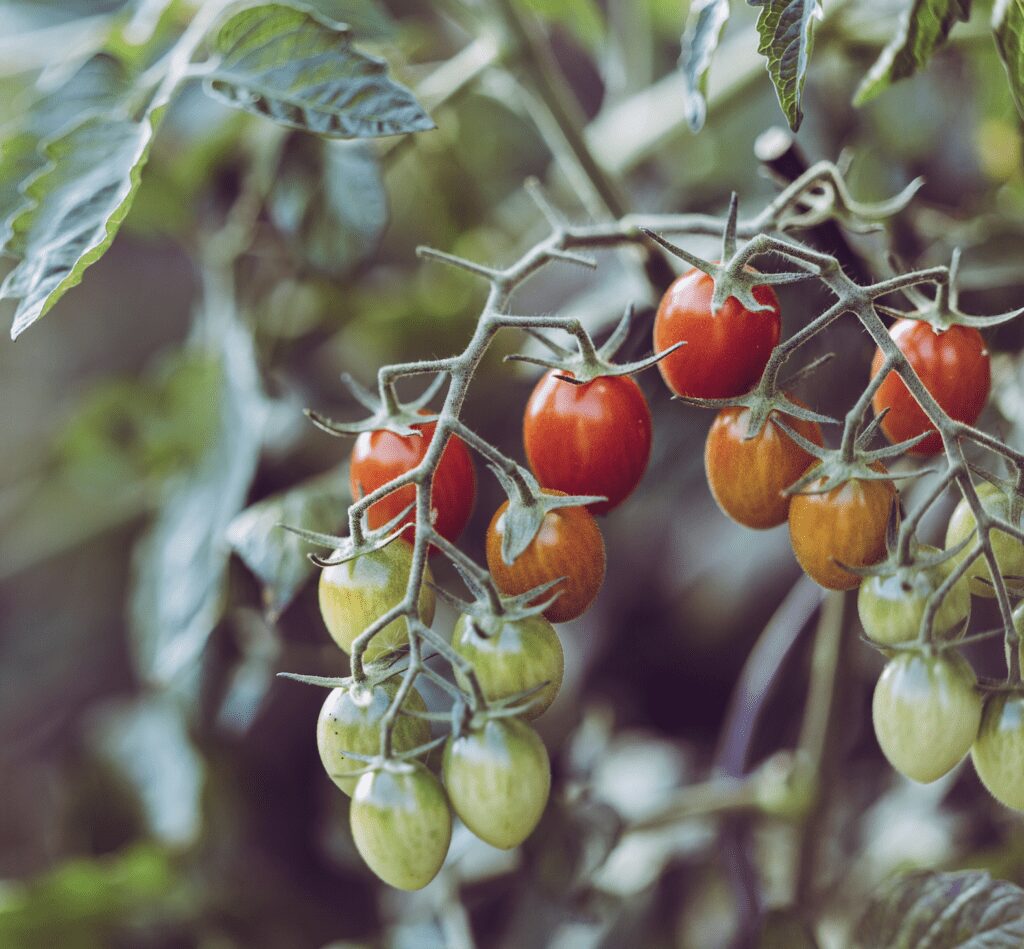
- Tomatoes
- Bell peppers
- Chilli peppers
- Eggplant
Cucurbitacea (Gourds)
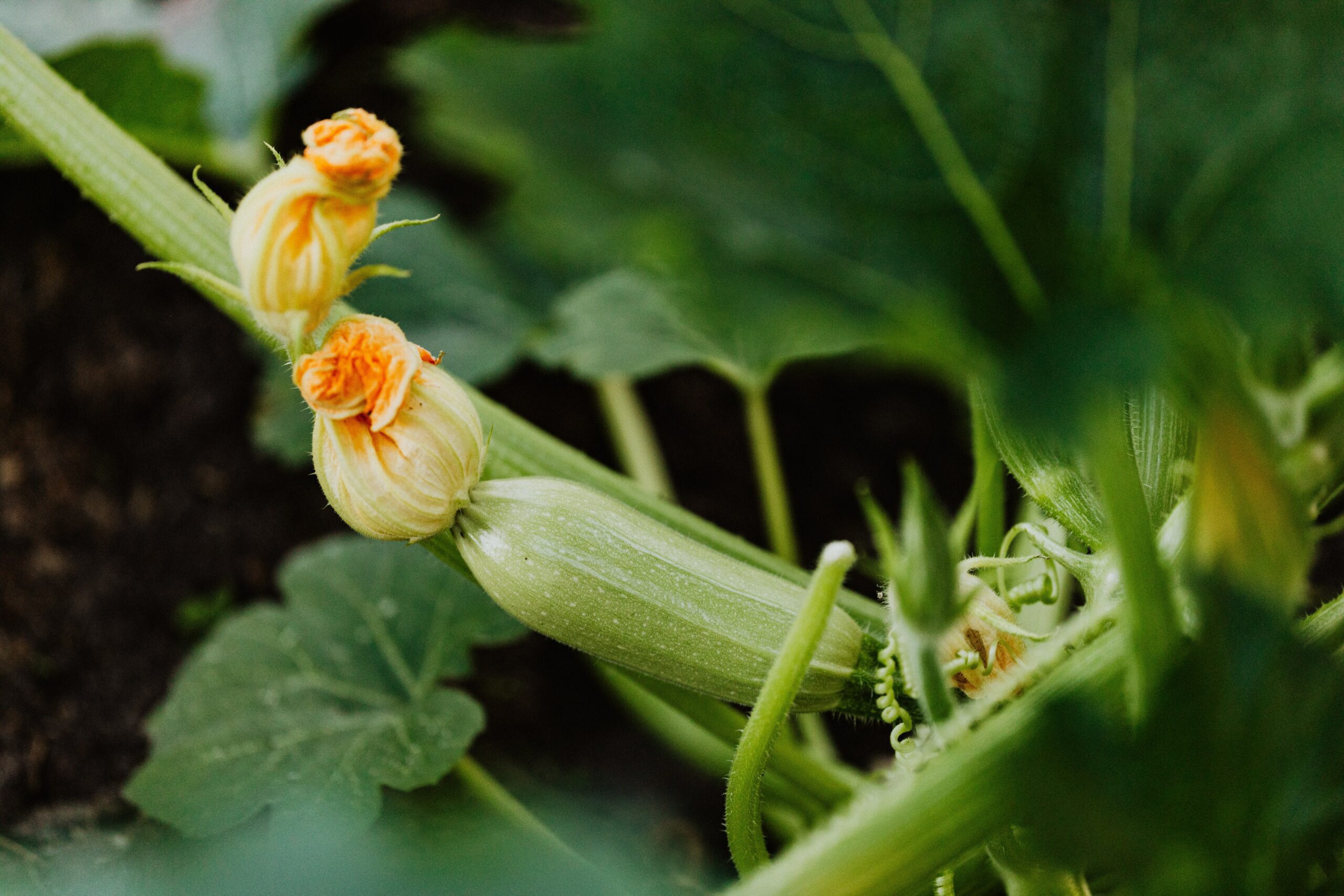
- Cucumbers
- Pumpkins
- Squash
- Zucchini
Why are “vegetable fruits” fruits not sweet?
Evolution’s short answer is that non-sweet fruits have evolved with fruit-eating birds. Most birds are not appealed by sweet taste, because they cannot even taste sweetness.
Sweet fruits have evolved with frugivores that crave and seek sweet-tasting food, i.e., fruit-eating mammals, including primates (chimpanzees and humans). Non-sweet fruits only became human food recently through extensive cultivation and breeding for bigger, sweeter, and less toxic traits compared to the wild type.
In contrast – but not surprisingly – many tropical fruits are much sweeter, less acidic, and more fleshy – because they have naturally evolved as monkey, ape, and human food and have co-evolved with primates.
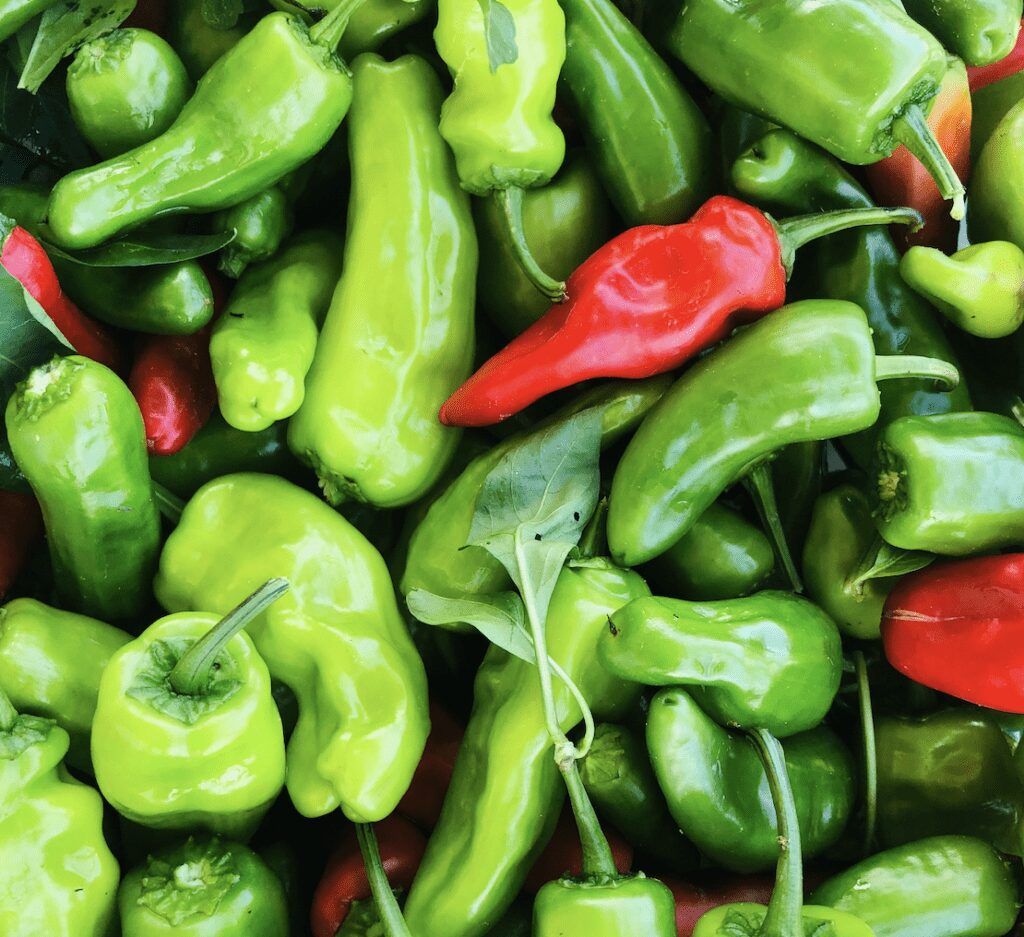
Nightshade family (Solanaceae)
Originally, the group of nightshade veggies (tomatoes, bell peppers, and eggplants) was deadly toxic! They contain toxic solanine. Green tomatoes should not be eaten because the solanine content is too high!
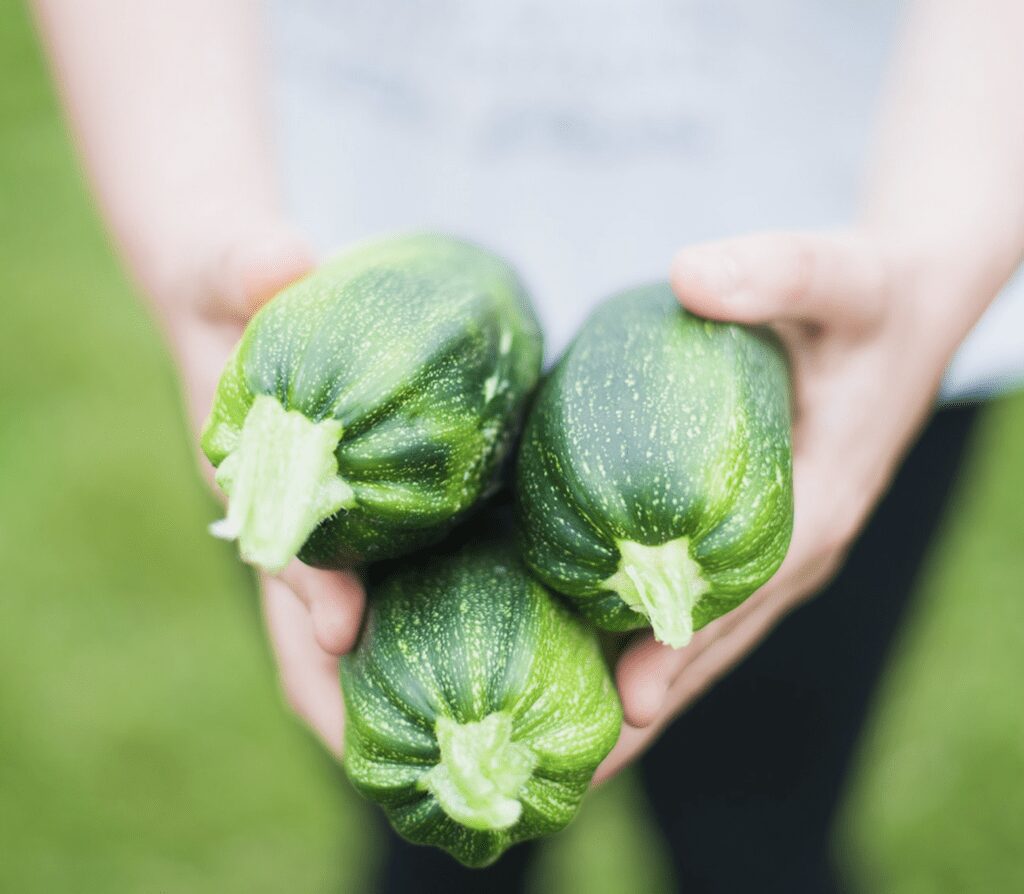
Gourd family (Cucurbitacea)
The plant family of cucumbers, pumpkins, and squash contains bitter-tasting cucurbitacin that signals toxicity to humans – tasting bitterness and toxicity is crucial for the survival and health of animals!
The bitter toxin can kill a human when the off-putting taste of Cucurbitacea vegetables is ignored, like the case of a German gardener who died of courgette-poisoning (zucchini) and made it to the Newspapers in 2015!
“Although modern seed hybridising has bred the naturally-occurring toxin cucurbitacin out of cucumbers, pumpkins and squash it’s possible, through a rare mutation and back-crossing, for it to return. Home vegetable growers who repeatedly grow only their own collected seed run the risk of this occurring.”
www.gardendrum.com
Are our veggies pre-historic foods for huge herbivores?
What sounds like coming from a fantasy movie is actually written in peer-reviewed scientific literature: Our veggie fruits were food for animals of the pre-historic “megafauna” – meaning fruit-eating dinosaurs! Humans are certainly not the original consumers of wild fruits from the gourd family.
Why does this even matter? Fruits are nontoxic and nutritionally beneficial for their mutualistic seed-dispersing consumer (animals or humans). But they often are not edible to animals that are not their seed-disperser! This evolutionary dynamic (called the dispersal syndrome) explains why the gourd family is toxic to humans!
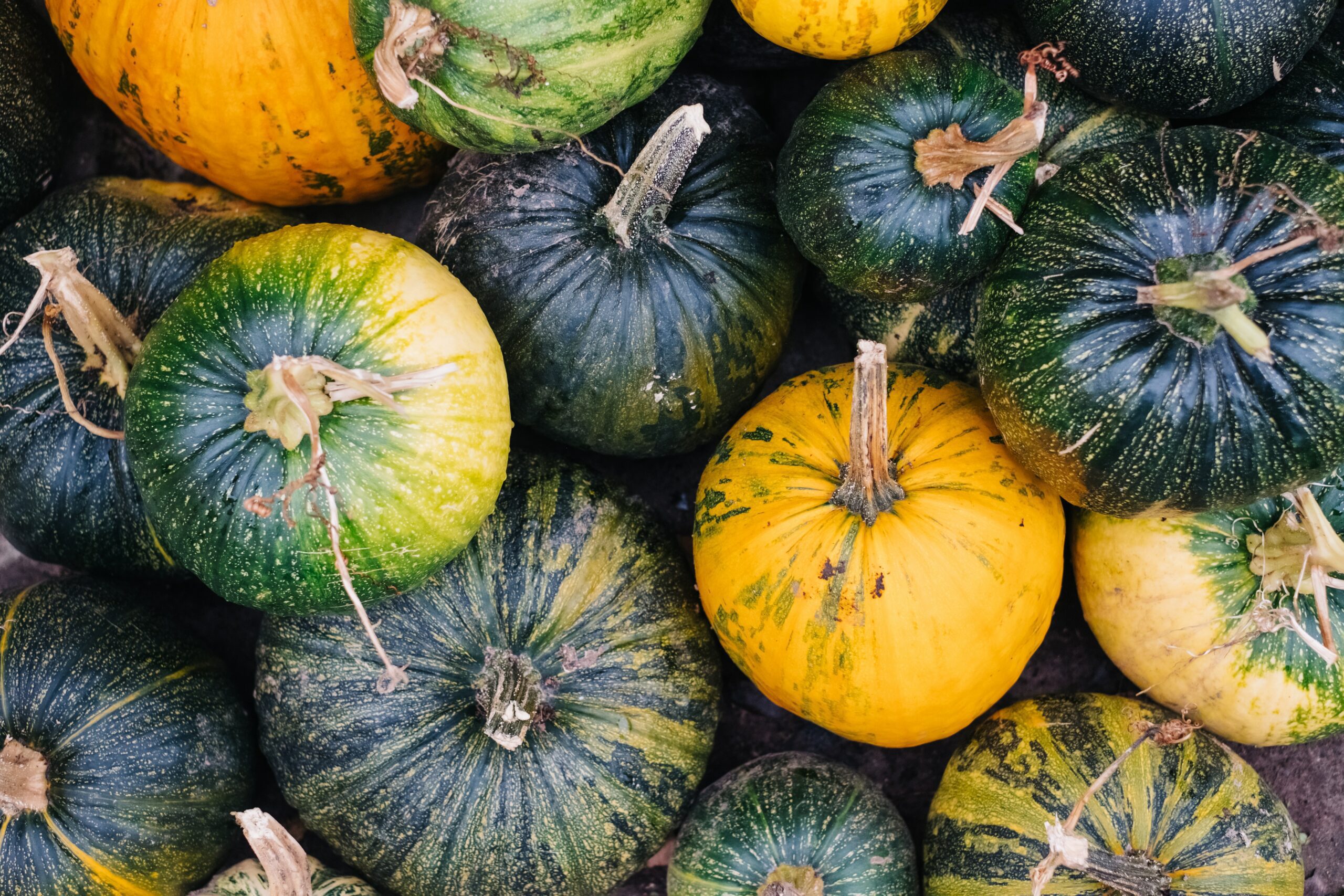
“Directly, megafauna consumed Cucurbita fruits and dispersed their seeds; wild Cucurbita were likely left without mutualistic dispersal partners in the Holocene because they are unpalatable to smaller surviving mammals with more bitter taste receptor genes.” (Kistler et al., 2015)
Are non-sweet fruits healthier than sweet fruits?
This is a common belief and is simply not true. Vegetable fruits can be a valuable addition to the human diet, especially in temperate climates. However, they are not more healthy for humans than sweet fruits!
Humans are anatomically and physiologically adapted to eating a large amount of sweet fruit in their diet – which is shown by our love for sweetness! There is even a consensus in nutrition and health science that sweet, simple sugar in fruits is not harmful but brings various health benefits! Fruits are highly nutritious and build the basis of a biologically appropriate diet for high fruit-eating species – like ourselves!
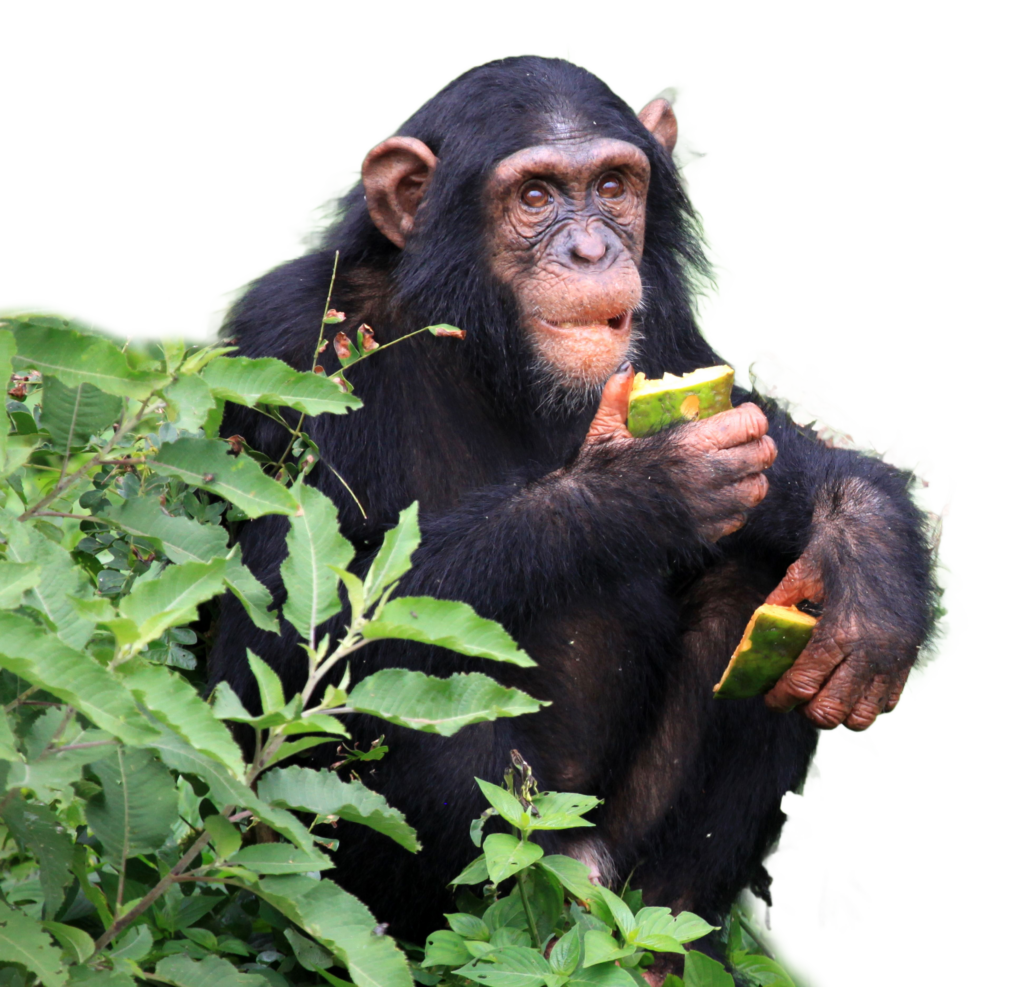
Natural diet of frugivorous primates: Ripe tropical fruits make up the bulk part of the species-specific diet of frugivorous primates. This means fruit is not the only food in their diet, but the most in terms of quantity (around 70% for chimpanzees). Depending on the season, frugivorous primates eat those fruit types, which are ripe and sweet, and only resort to other food groups when they are scarce.
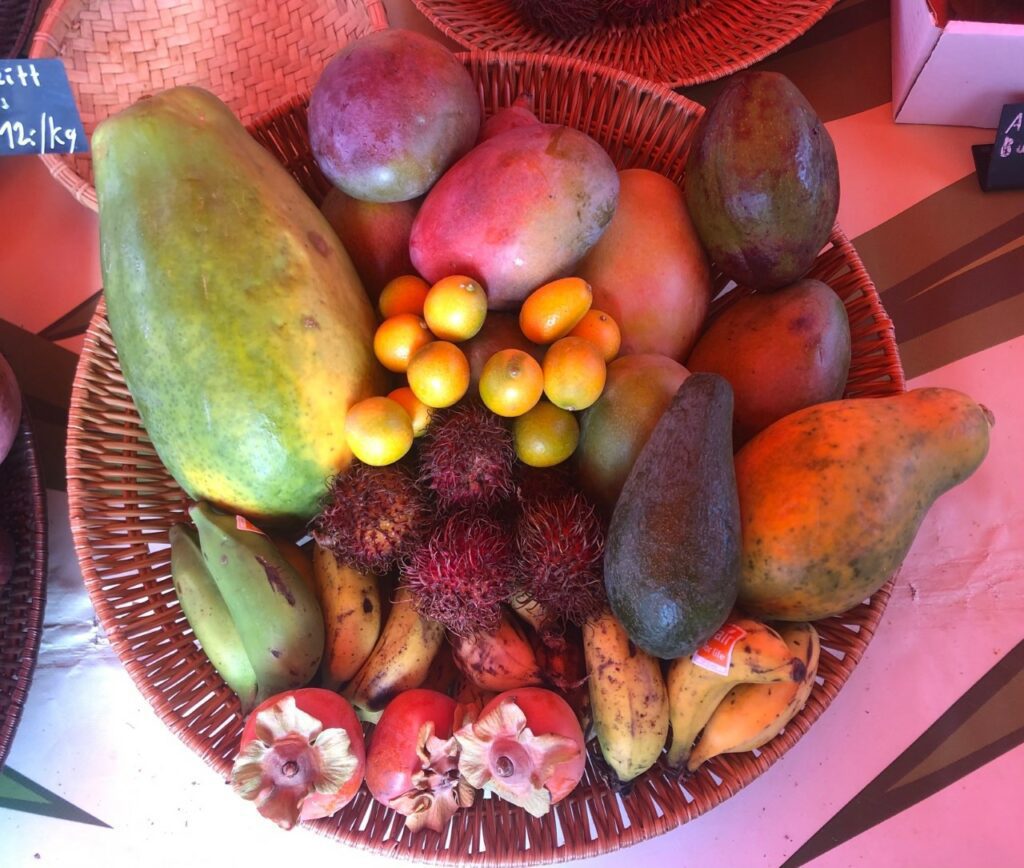
Instinctual behavior of humans: Humans are attracted to colorful fruits and love sweet taste. In fact, most other mammals cannot see as many colors and cannot taste sweetness like humans do. Those are traits that have evolved in frugivores for fruit foraging! When we observe small children’s natural, instinctive eating behavior, they are not so culturally confused: If very young children are given bowls with different foods, it is the sweet fruit that is eaten first.
Why do fruits contain sugars in the first place?
To attract the seed-dispersing animal with sweetness, fruits are the seed-containing parts of a plant that develop from a flower. The seeds within fruits carry the embryo of the plant. Fruits are the part that ensures the dispersal of the next generation, which is sexually reproduced. In contrast to plant growth and offshoots, seeds carry new genetic variations of two parent plants.

Fruits have evolved as the plant part that ensures seed dispersal by fruit-consuming animals (frugivores). The sweet sugar (which is energetic nutrition) of fruits is the payoff for the mobilization offered by the animals.
All fruits contain some amount of simple sugars
All fruits contain a certain amount of sugar, as well as the non-sweet ones. This sugar is present either in the form of fructose or glucose. Some people believe that fruit sugar is unhealthy, but quite to the contrary, sugars from fruits are the perfect energy nutrition for our cells: humans are biologically adapted to sweet taste and eating sweet fruits. Furthermore, fructose does not even require insulin to enter our cells. Read more here on the long-held misconception about sugar.
Non-sweet fruits contain less simple sugar
Not all fruits attract seed-disperser with sweet sugars. Fruits eaten by birds are often sour (most birds lack the ability to taste sweet taste), while fruits eaten by frugivorous mammals are sweet. Non-sweet fruits have not evolved with animals attracted to sweet fruits. Thus, non-sweet fruits have not coevolved with primates!
Not all fruit types are suitable food sources for all frugivores
Eating fruit is a symbiosis between plants and fruit-consuming animals. But it is important to note that only the animal that is a matching seed disperser – the ones that have co-evolved with a particular fruit as a food source.
Sugars in fruits are the nutritious reward of fruit-eating animals that actually feel appealed by sweetness. To attract the right seed-dispersers, the plant evolved different (but always nutrition-rich) features appealing to the right frugivore.
Why is this relevant when we look at the health benefits of different types of fruits? Because plants do evolve toxic defense within their fruits against the “wrong” fruit consumers – in the case of “bird fruits,” we are those wrong consumers. And in the case of the non-sweet fruits, they naturally contained such toxins. Again, non-sweet fruits have not coevolved with primates!
Most fruits from temperate climate have evolved as bird foods
Most wild-type fruits, except for some sweet berries, in temperate zones are naturally acidic and are originally food sources for birds. This is because birds do not have sweet receptors like mammals and eat most of the canopy berries in a temperate climate.
The crabapple – the original apple – is tiny and very acidic.
Most temperate fruits we know today originally evolved with birds as their fruit-disperser. This is why they are not sweet (Except for nectar-eating species, birds cannot taste sweetness, but acidic taste).
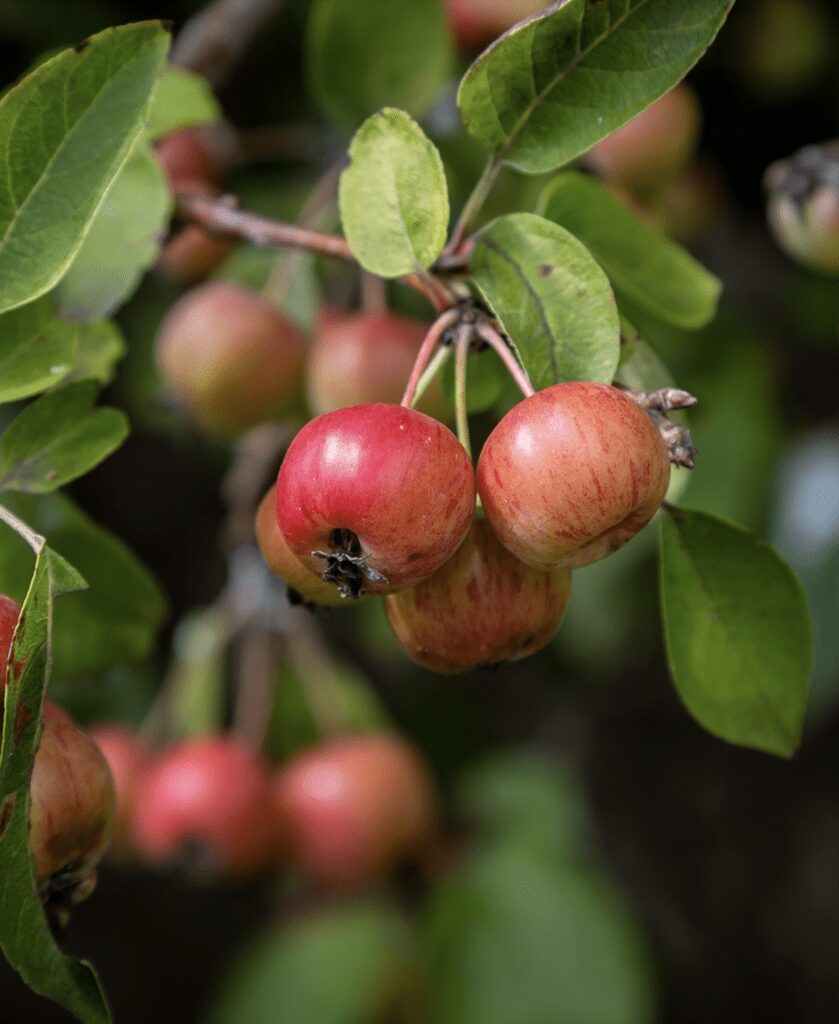
Humans have evolved with tropical sweet fruits – not with vegetable fruits
Humans originated in tropical forests. Our biology is still highly similar to today’s tropical frugivorous primates. Thus, tropical fruits are our “evolutionary foods”.
In contrast to complex carbs in grains, simple sugar molecules in fruits taste sweet and are tasty for us in their raw form (read here about fruits vs. grains carb source). Humans and other primate frugivores have evolved to taste and love sweet, simple sugars to obtain energy from fruits while helping the plant to disperse into new areas!
Conclusion
The idea of non-sweet vegetable fruits being healthier than sweet fruits is simply untenable from an evolutionary and ecological view. The war on natural, simple sugars and ignoring the crucial role of sweet tropical fruits in health goes against human dietary biology and evolutionary adaptations.
Read more about the biological suitability of different foods for humans:

Go To What Food Are Really Suitable for Humans?
References
- D. Sharma, S. Mishra, An Acute Toxicity in Human Health of Raw and Cooked Vegetable in Tomato and Spinach. Longdom: Journal of Nutrition and Food Sciences (2021) (available at https://www.longdom.org/open-access/an-acute-toxicity-in-human-health-of-raw-and-cooked-vegetable-in-tomato-and-spinach-64567.html).
- A. Fischer, Y. Gilad, O. Man, S. Pääbo, Evolution of bitter taste receptors in humans and apes. Molecular Biology and Evolution. 22, 432–436 (2004), doi:10.1093/molbev/msi027. (link)
- Pat Hagan, You could be eating killer courgettes. Daily Mail Online (2020) (available at https://www.dailymail.co.uk/health/article-8676819/You-eating-killer-courgettes.html). (link)
- German man dies after eating home-grown zucchini. GardenDrum (available at https://gardendrum.com/2015/08/25/german-man-dies-after-eating-home-grown-zucchini/). (link)
- K. Valenta, O. Nevo, The dispersal syndrome hypothesis: How animals shaped fruit traits, and how they did not. Functional Ecology. 34, 1158–1169 (2020), doi:10.1111/1365-2435.13564. (link)
- L. Kistler et al., Gourds and squashes (Cucurbita spp.) adapted to megafaunal extinction and ecological anachronism through domestication. Proceedings of the National Academy of Sciences. 112, 15107–15112 (2015), doi:10.1073/pnas.1516109112. (link)

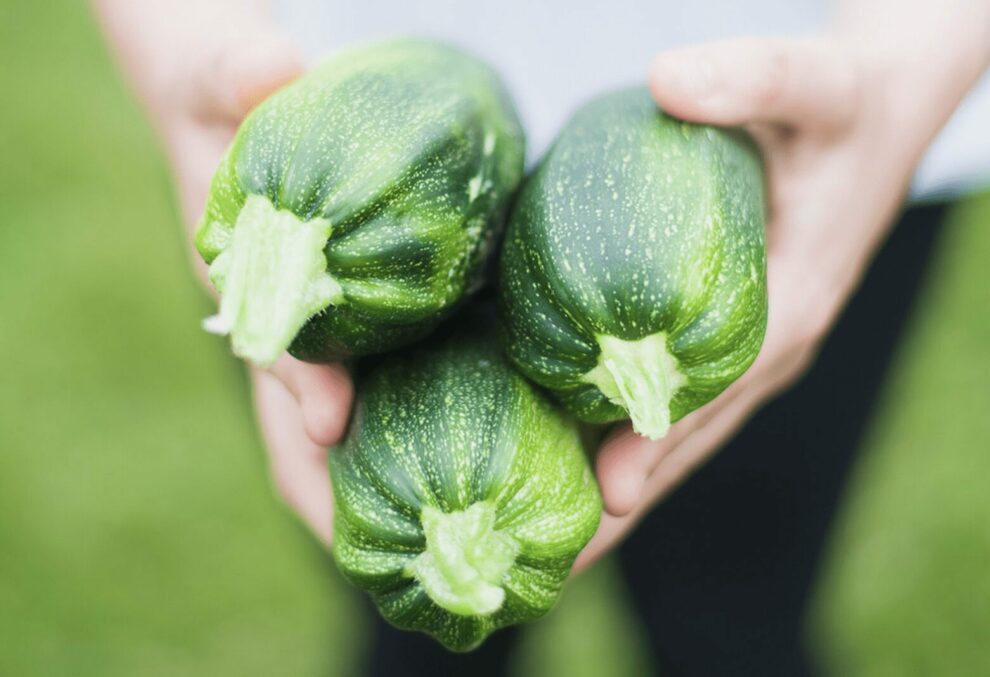
I based my diet around temperate fruits too much for sure and was digesting better then ever. however I would feel off if not eating enough bananas. I had a banana smoothie and felt amazing after. great article.
How long have you been eating like this? I think doing this for a shorter period is healthy and cleansing, similar to a juice cleanse, but in the long term, it is risky due to deficiencies. Bananas are also my staple, and I try to get the good quality ones that are more nutritious. I get them from a store that imports them from Uganda – they taste heavenly. I also get frozen fruits as they are riper than fresh imported ones. I do also eat a lot of salads with veggie fruits (not tomatoes or bell peppers as my body is not reacting well to them) and temperate fruits etc… We just do the best we can when we don’t live in the tropics.
how do you feel about melons?
Yeah, good question, not sure. I love melons… I eat them a lot. I would say they are in a similar category as temperate fruits, like apples, which were also cultivated to turn palatable.